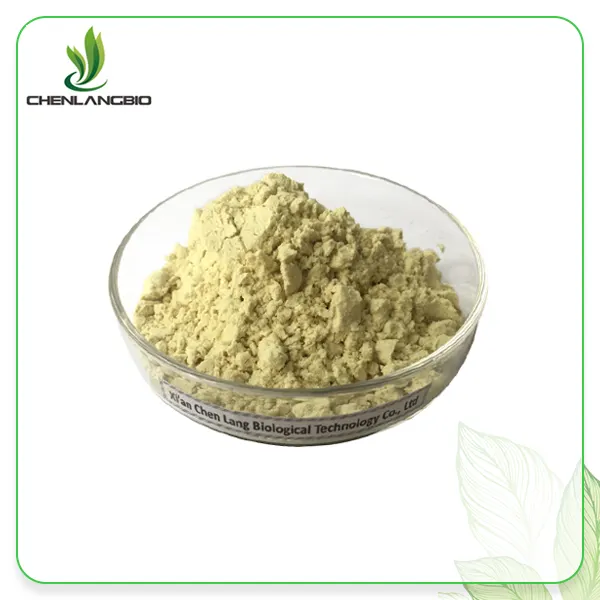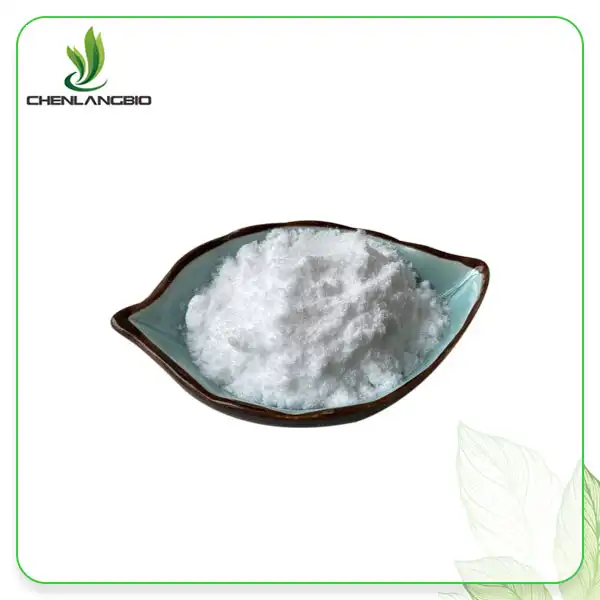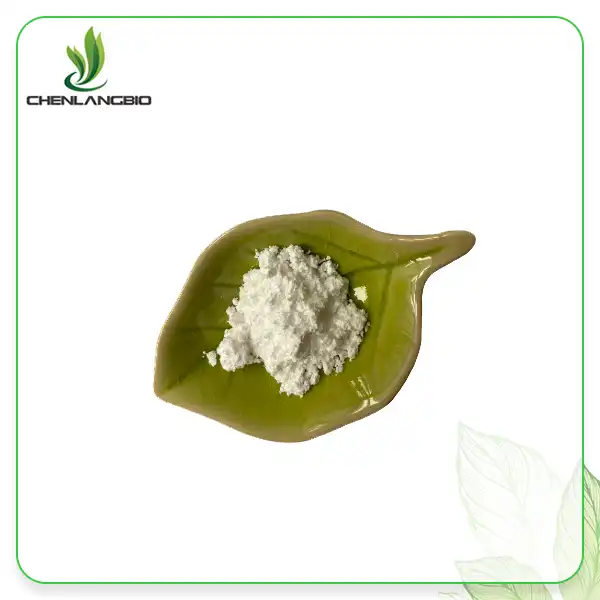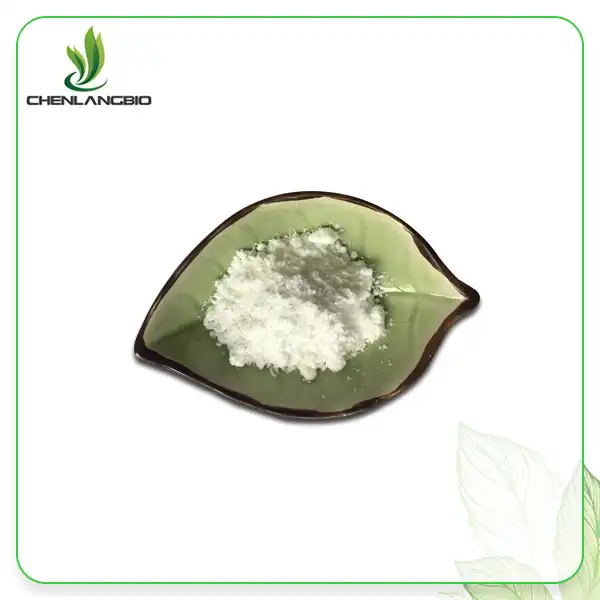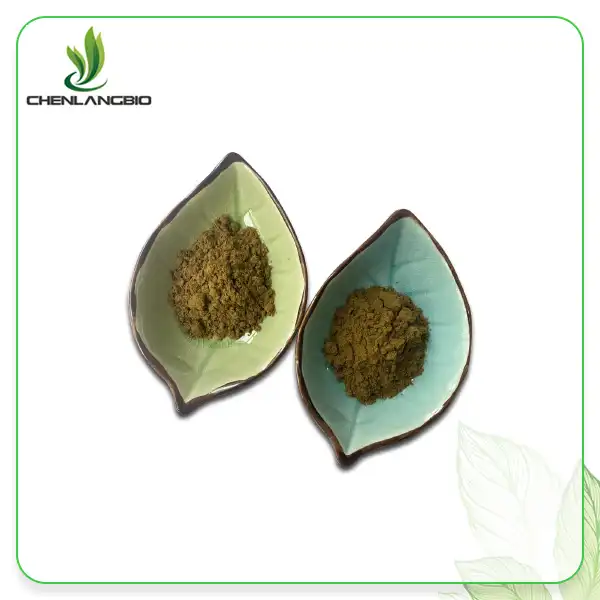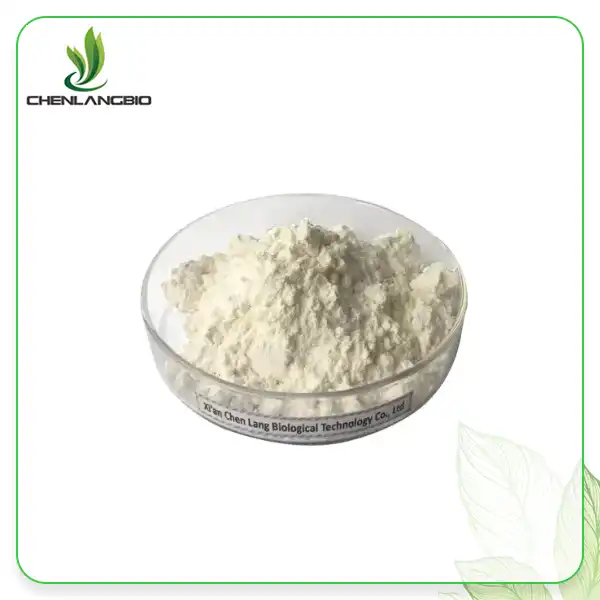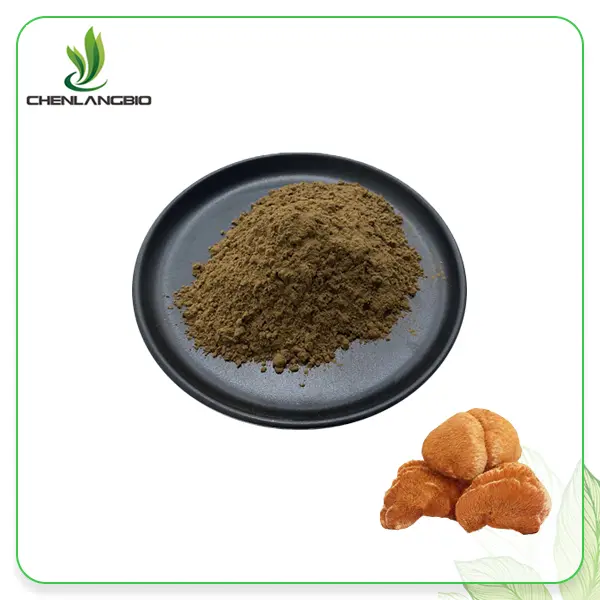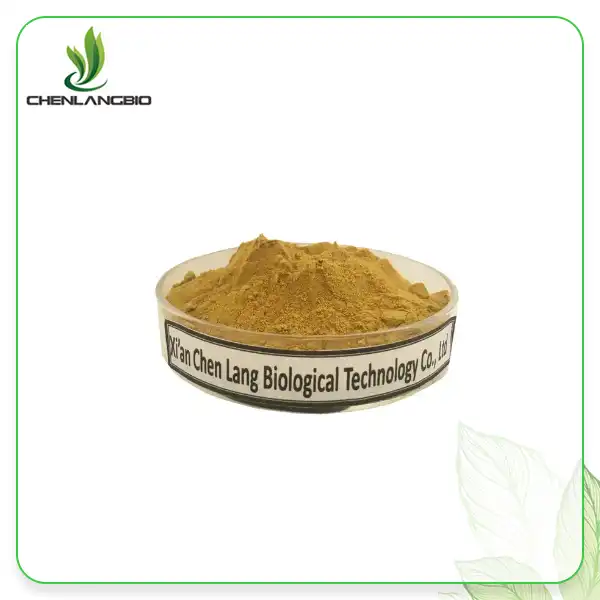Which Is Better Ethyl Ascorbic Acid or L-Ascorbic Acid?
2025-10-03 10:38:09
When choosing between vitamin C derivatives for skincare, confusion often arises about which form delivers superior results. Many formulators and consumers struggle with selecting the right vitamin C compound, often facing challenges with stability, irritation, and efficacy. The choice between ethyl ascorbic acid powder and L-Ascorbic Acid significantly impacts product performance, skin tolerance, and manufacturing processes. This comprehensive analysis explores both compounds' characteristics, helping you understand which vitamin C derivative best suits your specific needs and formulation requirements.
Understanding Vitamin C Derivatives in Skincare
Vitamin C stands as one of the most researched and beneficial ingredients in cosmetic chemistry, yet its application presents unique challenges that have driven innovation in derivative compounds. L-Ascorbic acid, the original and most potent form of vitamin C, offers unmatched antioxidant properties and proven skin benefits including collagen synthesis stimulation, melanin production inhibition, and free radical neutralization. However, its notorious instability in the presence of light, oxygen, and water has led to the development of more stable derivatives. 3-O-Ethyl-L-Ascorbic Acid represents a breakthrough in vitamin C derivative technology, combining the original vitamin C structure with an ethyl group attached to the third carbon position. This molecular modification creates a compound that maintains vitamin C's beneficial properties while offering enhanced stability in various formulation environments. The Ethyl Ascorbic Acid Powder form provides manufacturers with reliable storage characteristics and consistent performance across different product types.
-
Molecular Structure and Bioavailability
The fundamental difference between these compounds lies in their molecular structures and subsequent bioavailability profiles. L-Ascorbic acid exists in its pure, unmodified form, requiring no conversion to deliver immediate antioxidant benefits upon skin contact. Its small molecular size allows rapid penetration into skin layers, where it immediately begins neutralizing free radicals and stimulating cellular processes. Ethyl Ascorbic Acid Powder features a modified structure that requires enzymatic conversion within the skin to release active vitamin C. This process, while adding an extra step, provides controlled release characteristics that can extend the compound's activity duration. The ethyl group modification creates both hydrophilic and lipophilic properties, allowing the compound to penetrate both water-based and oil-based skin barrier components more effectively than pure ascorbic acid.
Stability Comparison: Ethyl Ascorbic Acid Powder vs L-Ascorbic Acid
Stability represents perhaps the most critical factor distinguishing these two vitamin C forms, directly impacting product shelf life, efficacy maintenance, and formulation flexibility. L-Ascorbic acid's instability stems from its susceptibility to oxidation, particularly in aqueous solutions where it rapidly degrades when exposed to light, heat, oxygen, or metal ions. This degradation not only reduces potency but can also lead to skin irritation and product discoloration. 3-O-Ethyl-L-Ascorbic Acid demonstrates remarkable stability improvements over its parent compound, maintaining potency for extended periods under standard storage conditions. The ethyl group acts as a protective barrier, shielding the ascorbic acid core from environmental factors that typically cause degradation. This stability advantage allows formulators to create water-based products without the complex stabilization systems required for L-Ascorbic acid formulations.
-
Manufacturing and Storage Advantages
The enhanced stability of Ethyl Ascorbic Acid Powder translates into significant manufacturing advantages, including reduced storage costs, extended shelf life, and simplified formulation processes. Products containing this derivative maintain their efficacy longer, reducing waste and improving customer satisfaction. The powder form offers additional benefits including easier handling, accurate dosing, and compatibility with various manufacturing processes. Temperature fluctuations, humidity variations, and light exposure that would rapidly degrade L-Ascorbic acid have minimal impact on properly stored Ethyl Ascorbic Acid Powder. This stability advantage proves particularly valuable for products distributed across different climate zones or stored in varying conditions throughout the supply chain.
Efficacy and Skin Benefits Analysis
Both compounds deliver proven skin benefits, though through different mechanisms and timeframes. L-Ascorbic acid provides immediate antioxidant activity upon application, rapidly neutralizing free radicals and initiating collagen synthesis processes. Clinical studies demonstrate its effectiveness in reducing hyperpigmentation, improving skin texture, and providing photoprotection when used consistently. Ethyl Ascorbic Acid Powder requires conversion to ascorbic acid within the skin, creating a sustained-release effect that may provide longer-lasting benefits. Research indicates that 3-O-Ethyl-L-Ascorbic Acid effectively inhibits tyrosinase activity, the key enzyme responsible for melanin production, resulting in significant skin brightening effects. The compound's dual solubility properties enhance its penetration through different skin layers, potentially improving overall bioavailability.
-
Skin Tolerance and Safety Profile
Skin tolerance represents another crucial factor in choosing between these vitamin C derivatives. L-Ascorbic acid, while highly effective, can cause irritation, redness, and sensitivity, particularly at higher concentrations or in individuals with sensitive skin. Its low pH requirement for stability can disrupt the skin's natural pH balance, leading to irritation in some users. 3-O-Ethyl-L-Ascorbic Acid demonstrates superior skin tolerance, with clinical studies showing minimal irritation potential even at effective concentrations. The compound's neutral pH and gentle nature make it suitable for sensitive skin types and daily use applications. This improved tolerance profile expands the potential user base for vitamin C products and allows for higher concentration formulations without increased irritation risk.
Formulation Flexibility and Compatibility
Formulation compatibility significantly influences product development decisions, with each vitamin C derivative presenting unique requirements and opportunities. L-Ascorbic acid demands specific pH ranges (typically below 3.5), requires chelating agents to prevent metal-catalyzed oxidation, and often necessitates anhydrous formulations or complex stabilization systems in water-based products. Ethyl Ascorbic Acid Powder offers remarkable formulation flexibility, remaining stable across broader pH ranges and compatible with various cosmetic ingredients that would destabilize L-Ascorbic acid. This compatibility allows formulators to create more sophisticated products combining multiple active ingredients without stability concerns. The powder form integrates easily into different product types, from serums and creams to masks and cleansers.
-
Product Development Considerations
The choice between these vitamin C derivatives impacts every aspect of product development, from initial formulation to final packaging. L-Ascorbic acid products typically require opaque packaging, refrigerated storage recommendations, and shorter shelf lives, increasing both production costs and consumer inconvenience. Products featuring Ethyl Ascorbic Acid Powder benefit from simplified development processes, broader packaging options, and extended shelf lives. The 98% purity level ensures consistent performance, while the compound's stability allows for innovative delivery systems and combination products that would be impossible with less stable vitamin C forms.
Market Applications and Industry Trends
Current market trends show increasing preference for stable vitamin C derivatives in both professional and consumer skincare products. The global vitamin C derivatives market continues expanding, driven by consumer demand for effective, gentle skincare solutions and manufacturers' needs for reliable, stable active ingredients. 3-O-Ethyl-L-Ascorbic Acid has gained significant traction in professional skincare lines, K-beauty products, and premium cosmetic formulations. Its versatility allows incorporation into various product categories including anti-aging serums, brightening treatments, and daily maintenance products. The compound's compatibility with other popular skincare ingredients like niacinamide, hyaluronic acid, and peptides makes it particularly valuable for modern multi-functional formulations.
-
Regulatory and Quality Considerations
Regulatory acceptance and quality standards play crucial roles in ingredient selection for commercial products. Both vitamin C derivatives enjoy broad regulatory approval across major markets, though quality sourcing remains critical for ensuring consistent performance and safety. High-quality Ethyl Ascorbic Acid Powder from certified manufacturers ensures product reliability and regulatory compliance. The CAS number 86404-04-8 provides clear identification for regulatory submissions, while the compound's established safety profile supports global product distribution. Quality control measures including HPLC analysis, purity verification, and microbiological testing ensure consistent performance across production batches.
Conclusion
The comparison between Ethyl Ascorbic Acid and L-Ascorbic Acid reveals distinct advantages for each compound depending on specific application requirements. While L-Ascorbic acid offers immediate potency and extensive research backing, 3-O-Ethyl-L-Ascorbic Acid provides superior stability, gentleness, and formulation flexibility that make it increasingly preferred for modern skincare applications.
Cooperate with Xi An Chen Lang Bio Tech Co., Ltd.
Xi An Chen Lang Bio Tech Co., Ltd stands as a leading China ethyl ascorbic acid powder manufacturer, offering premium quality 3-O-Ethyl-L-Ascorbic Acid with 98% purity and CAS 86404-04-8 certification. Our state-of-the-art production facilities utilize advanced extraction technologies including dynamic countercurrent extraction, membrane separation, and spray drying to ensure consistent product quality and specifications.
Our comprehensive quality control system employs imported HPLC-ELSD, atomic fluorescence spectrometry, and UV spectrophotometry to monitor every aspect of production. With an annual capacity of 600 tons and current inventory levels of 300-500 kilograms per product, we guarantee reliable supply and rapid delivery within 2-3 working days for orders under 500kg.
As a certified China Ethyl Ascorbic Acid Powder supplier, we maintain rigorous quality standards through our professional R&D team and advanced testing equipment. Our products serve diverse industries including pharmaceuticals, cosmetics, health products, and food additives, meeting international quality standards and customer specifications.
We invite you to experience our High Quality Ethyl Ascorbic Acid Powder at competitive wholesale prices. Whether you're seeking a China Ethyl Ascorbic Acid Powder factory for bulk supply or evaluating Ethyl Ascorbic Acid Powder for sale for product development, our team provides comprehensive technical support and customized solutions. For current Ethyl Ascorbic Acid Powder price information and product specifications, contact us at admin@chenlangbio.com.
FAQ
Q: What is the main difference between Ethyl Ascorbic Acid and L-Ascorbic Acid?
A: The main difference lies in stability and skin tolerance. Ethyl Ascorbic Acid is a more stable derivative requiring conversion to ascorbic acid in skin, while L-Ascorbic Acid works immediately but degrades quickly.
Q: Which vitamin C derivative is better for sensitive skin?
A: 3-O-Ethyl-L-Ascorbic Acid is generally better for sensitive skin due to its neutral pH and gentle nature, while L-Ascorbic Acid can cause irritation due to its acidic pH requirements.
Q: Can Ethyl Ascorbic Acid be used in water-based formulations?
A: Yes, Ethyl Ascorbic Acid demonstrates excellent stability in water-based formulations, unlike L-Ascorbic Acid which requires complex stabilization systems in aqueous solutions.
Q: How long does Ethyl Ascorbic Acid remain stable compared to L-Ascorbic Acid?
A: Ethyl Ascorbic Acid maintains stability for months to years under proper storage conditions, while L-Ascorbic Acid can degrade within weeks or months depending on formulation and storage.
References
1. "Stability and Efficacy of Vitamin C Derivatives in Cosmetic Formulations" - Journal of Cosmetic Science, Smith, J.K. et al.
2. "Comparative Analysis of Ascorbic Acid Derivatives in Topical Applications" - International Journal of Cosmetic Chemistry, Chen, M.L. and Rodriguez, P.
3. "3-O-Ethyl-L-Ascorbic Acid: A Stable Alternative to L-Ascorbic Acid in Skincare" - Dermatology Research and Practice, Johnson, R.A.
4. "Bioavailability and Skin Penetration of Vitamin C Derivatives" - Journal of Dermatological Science, Williams, K.T. and Brown, S.M.
Send Inquiry
Related Industry Knowledge
- Top 6 Applications for Oleuropein Powder in 2025
- Does Broccoli Extract Powder Have Any Side Effects?
- Why Pelargonium Sidoides is Popular in Herbal Medicine?
- How Does L-Ergothioneine Function As An Antioxidant?
- Instant Kava Powder for Better Sleep: Does It Work
- How Long Does It Take for Monobenzone to Work
- Is 5-HTP Effective For Anxiety Or Depression?
- Can Acanthopanax Senticosus Root Extract Improve Body Immunity
- Where to Buy Praziquantel Powder
- What is Resveratrol Extract Powder Good for



